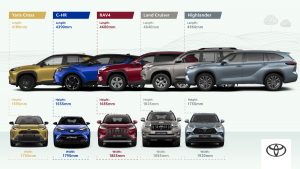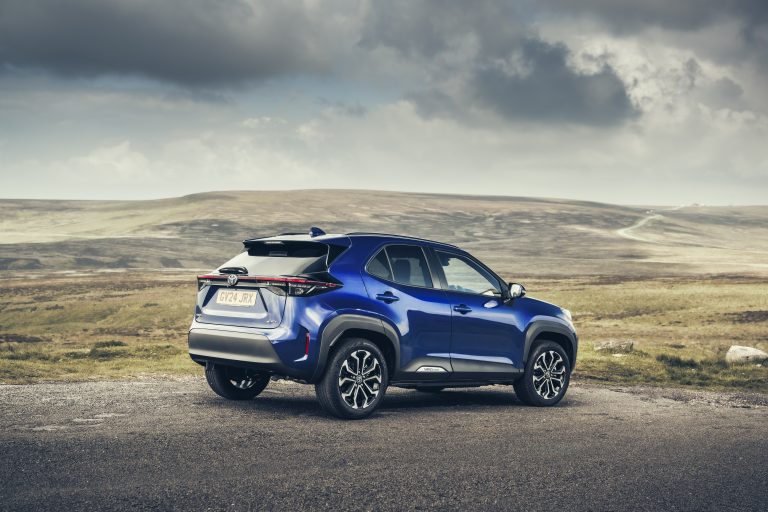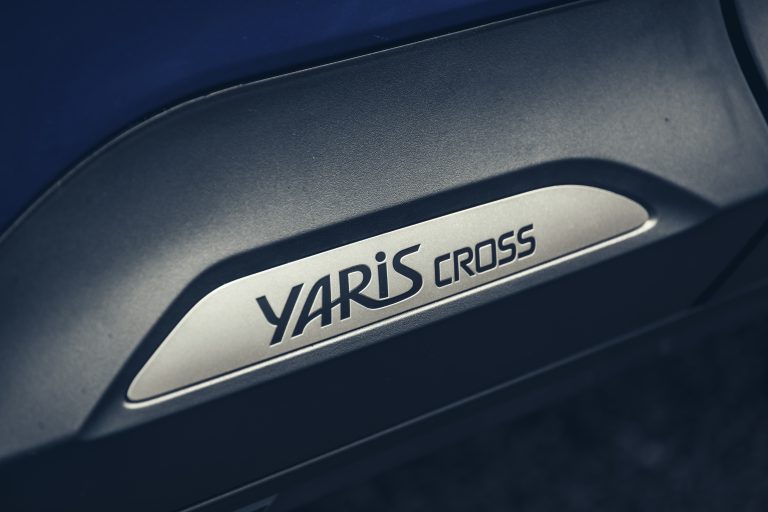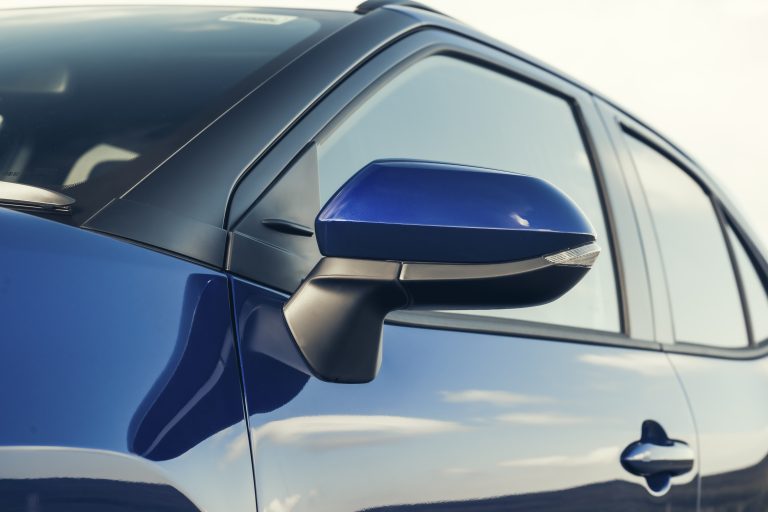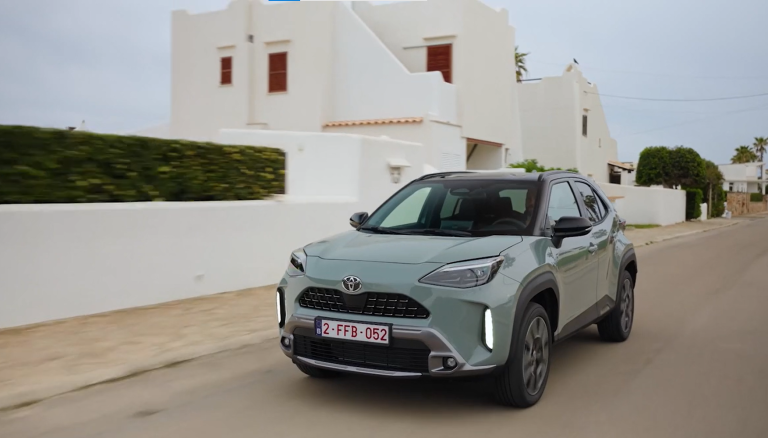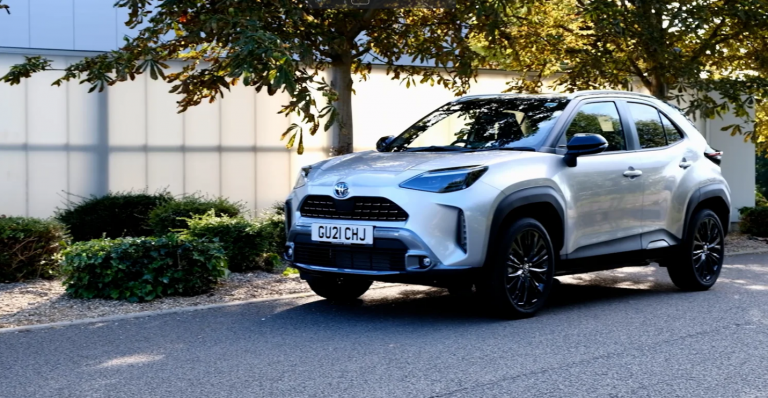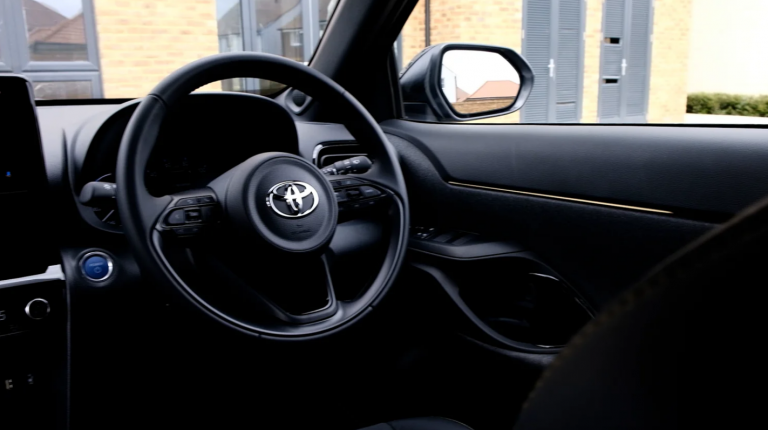All-new Yaris Cross Extends Toyota’s Market-leading Hybrid Electric SUV Line-up
The introduction of the all-new Yaris Cross gives Toyota an unmatched line-up of five hybrid electric SUV models, meeting the demands of everything from city streets to driving adventures with up to seven on board. And, of course, beyond the electrified portfolio, the 4×4 range also features the mighty Land Cruiser – the original Toyota off-roader with a heritage spanning 70 years.
Here’s a snapshot of the special qualities featured in each model.
Yaris Cross
Using the same GA-B platform as the award-winning Yaris hatchback, Yaris Cross brings together Toyota’s expertise in small car design and SUV engineering. It provides day-to-day practicality and easy manoeuvrability that are ideal for urban life while also fitting the bill for owners who want more than a small hatchback when heading off for the great outdoors.
Power is courtesy of the proven fourth generation Toyota hybrid electric system featured in the hatchback, giving brisk performance and generous all-electric EV mode driving capability.
It’s an authentic SUV, currently the only model in its class to offer the option of all-wheel drive –Toyota’s light and compact AWD-i intelligent system that uses an additional electric motor on the rear axle, so fuel and emissions efficiency isn’t adversely affected.
Key figures
Powertrain 1.5-litre hybrid electric
Maximum power (bhp/kW, full system) 114/85
Maximum speed (mph) 106
0-62mph acceleration (sec) 11.2 (2WD)/11.8 (AWD-i)
Fuel economy (mpg, WLTP combined) 54.3 – 64.1 (2WD)/55.3 (AWD-i)
CO2 emissions (g/km, WLTP combined) 100 – 117.2 (2WD)/115 – 116 (AWD-i)
Length/width/height (mm) 4,180/1,765/1,595
Load space capacity (litres) 397 – 460 (2WD)/320 – 401 (AWD-i)
Toyota C-HR
Introduced in 2016, Toyota C-HR was the first SUV to be built using Toyota New Global Architecture principles, giving it the core benefits of a low centre of gravity and highly rigid body – qualities that translate into agile dynamic performance, responsiveness and improved safety. The TNGA “C” platform also gave the designers more freedom to render a striking look, bringing sharper coupe-like lines to the SUV mix.
Toyota C-HR has proved a popular success and ranks as one of Toyota’s current top-sellers. Its appeal was widened with the introduction of a second hybrid electric powertrain option, a 150bhp 2.0-litre system that enables 0-62mph acceleration in 8.2 seconds. The sporting side of the SUV is also expressed in a GR Sport version with styling details inspired by Toyota Gazoo Racing and a more high-tech equipment specification.
Key figures
Powertrain 1.8 or 2.0-litre hybrid electric
Maximum power (bhp/kW, full system) 120/90 (1.8) 150/112 (2.0)
Maximum speed (mph) 105 (1.8)/112 (2.0)
0-62mph acceleration (sec) 11.0 (1.8)/8.2 (2.0)
Fuel economy (mpg, WLTP combined) 53.3 – 57.6 (1.8)/49.6 – 54.3 (2.0)
CO2 emissions (g/km, WLTP combined) 110 – 120 (1.8)/119 – 128 (2.0)
Length/width/height (mm) 4,385/1.795/1,555
Load space capacity (litres) 377 – 1,164
RAV4
The Toyota RAV4 broke the SUV mould when the original version hit the road back in 1994. Its combination of SUV capability, all-wheel drive and rugged styling with sportier handling proved an instant success. The concept of the “recreational SUV” was born – and other manufacturers were quick to follow suit. Since then, Toyota has sold more than two million RAV4 worldwide, consistently bringing new ideas and technologies to what has become the world’s best-selling SUV.
The model’s market momentum enjoyed a huge boost with the introduction of hybrid electric power (it was Toyota’s first SUV hybrid), together with intelligent all-wheel drive for those want a higher level of SUV performance. In early 2021, the range grew further with the launch of the RAV4 Plug-in, Toyota’s first plug-in hybrid electric model and the new flagship of its hybrid range. This newcomer delivers both potent performance from its 306bhp powertrain and exceptional efficiency, with official (WLTP) CO2 emissions of 22g/km and 282.4mpg fuel economy.
Key figures – RAV 4 Hybrid
Powertrain 2.5-litre hybrid electric
Maximum power (bhp/kW, full system) 215/160 (FWD)/219/163 (AWD-i)
Maximum speed (mph) 112
0-62mph acceleration (sec) 8.4 (FWD)/8.1 (AWD-i)
Fuel economy (mpg, WLTP combined) 47.9 – 50.4 (FWD)/47.9 – 48.7 (AWD-i)
CO2 emissions (g/km, WLTP combined) 126 – 132 (FWD)/131 – 134 (AWD-i)
Length/width/height (mm) 4,600/1,855/1,685
Load space capacity (litres) 580 – 1,690
Key figures – RAV4 Plug-in Hybrid
Powertrain 2.5-litre plug-in hybrid electric
Maximum power (bhp/kW, full system) 302/225
Maximum speed (mph) 112
0-62mph acceleration (sec) 6.0
Fuel economy (mpg, WLTP combined) 282.4
CO2 emissions (g/km, WLTP combined) 22
Length/width/height (mm) 4,600/1,855/1,690
Load space capacity (l) 520 – 1,604
Highlander
Highlander has been part of Toyota’s international model range since 2000, but only debuted in the UK and Europe in 2021, taking its place as the brand’s largest hybrid SUV in the region. Built on the same TNGA platform as the Camry mid-size saloon, it has a fully flexible interior with seating for up to seven. Like RAV4 and Yaris Cross, it uses Toyota’s fourth generation hybrid electric technology and comes as standard with AWD-i intelligent all-wheel drive.
Highlander’s superior status is reflected in its premium equipment specifications with features such as 20-inch alloy wheels, a JBL sound system, Skyview panoramic roof and power-operated tailgate provided as standard.
Key figures
Powertrain 2.5-litre hybrid electric
Maximum power (bhp/kW, full system) 244/182
Maximum speed (mph) 111
0-62mph acceleration (sec) 8.3
Fuel economy (mpg, WLTP combined) 39.2 – 39.7
CO2 emissions (g/km, WLTP combined) 159 – 163
Length/width/height (mm) 4,966/1,930/1,755
Load space capacity (l) 268 – 1,909
Land Cruiser
The Toyota Land Cruiser has a worldwide reputation as the 4×4 that “will take you anywhere and bring you back safe and sound.” Its story began with the Toyota BJ, a truck-based model that was originally developed for military use. The Land Cruiser name was adopted in 1955 and the model spearheaded Toyota’s entry into new world markets. Across the decades the package has become more refined and technically sophisticated, but with no compromise in Land Cruiser’s defining quality, durability and reliability.
Today, it offers an unrivalled balance of on and off-road driving performance and a cabin that is both functional and luxurious. In the UK, three and five-door version are available, with seating for up to seven on board.
Key figures
Powertrain 2.8-litre turbodiesel
Maximum power (bhp/kW, full system) 201/150
Maximum speed (mph) 108
0-62mph acceleration (sec) 9.9
Fuel economy (mpg, WLTP combined) 27.7 – 31.0
CO2 emissions (g/km, WLTP combined) 239 – 251
Length/width/height (mm) 4,840/1,885/1,845
Load space capacity (l) 380 – 1,270
ENDS

